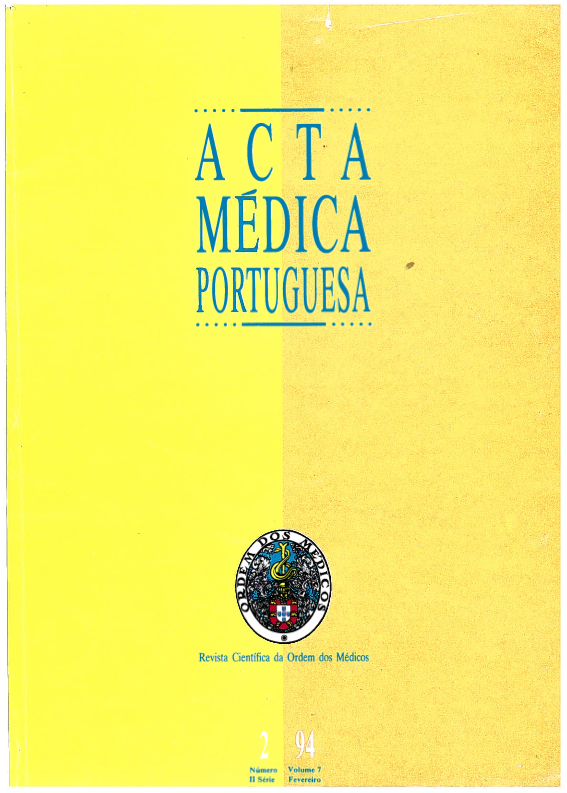O ecocardiograma transesofágico na avaliação dos acidentes vasculares cerebrais.
DOI:
https://doi.org/10.20344/amp.2860Resumo
We evaluated the diagnostic sensitivity and clinical value of transesophageal echocardiogram in 72 patients with a potential cardiogenic embolic stroke or transient ischemic attacks at the Neurological Department/Cerebrovascular disorders out-patient clinic of Santa Maria Hospital between February 1991 - February 1993. The transesophageal echocardiogram was performed in UTIC-Arsénio Cordeiro after current diagnostic evaluation. Eighteen patients had previous cardiac disease and in 58 the transthoracic echocardiogram was normal. Transesophageal echocardiography detected the presence of cardiac abnormalities in 49 patients (68%) and a potential cardiac embolic source in 38 (53%). Twenty-eight patients were started on anticoagulants. The most frequent cardiogenic embolic sources were: patent foramen ovale, atrial septal aneurysm and a left auricular/auricular appendicular dilatation. Twelve of these patients, who had a non cardiac cause for their stroke, were considered as a control group. The remaining cases (n = 60) had significantly more (+32%; 95% CI = 2-62) cardiac abnormalities than this control group. We performed a separate analysis of 3 subgroups of patients: 1--without and 2--with cardiac disease; 3--age < or = 45 years. No significant differences were found between group 1 and 2. Among the subjects aged < or = 45 years, undiagnosed cardiopathy was less frequent (-21%; 95% CI = 1-43). These results confirm the diagnostic sensitivity and the clinical value of transesophageal echocardiogram in detecting potential embolic sources in patients with stroke/transient ischemic attacks irrespective of age or previous cardiac disease.Downloads
Downloads
Como Citar
Edição
Secção
Licença
Todos os artigos publicados na AMP são de acesso aberto e cumprem os requisitos das agências de financiamento ou instituições académicas. Relativamente à utilização por terceiros a AMP rege-se pelos termos da licença Creative Commons ‘Atribuição – Uso Não-Comercial – (CC-BY-NC)’.
É da responsabilidade do autor obter permissão para reproduzir figuras, tabelas, etc., de outras publicações. Após a aceitação de um artigo, os autores serão convidados a preencher uma “Declaração de Responsabilidade Autoral e Partilha de Direitos de Autor “(http://www.actamedicaportuguesa.com/info/AMP-NormasPublicacao.pdf) e a “Declaração de Potenciais Conflitos de Interesse” (http://www.icmje.org/conflicts-of-interest) do ICMJE. Será enviado um e-mail ao autor correspondente, confirmando a receção do manuscrito.
Após a publicação, os autores ficam autorizados a disponibilizar os seus artigos em repositórios das suas instituições de origem, desde que mencionem sempre onde foram publicados e de acordo com a licença Creative Commons









